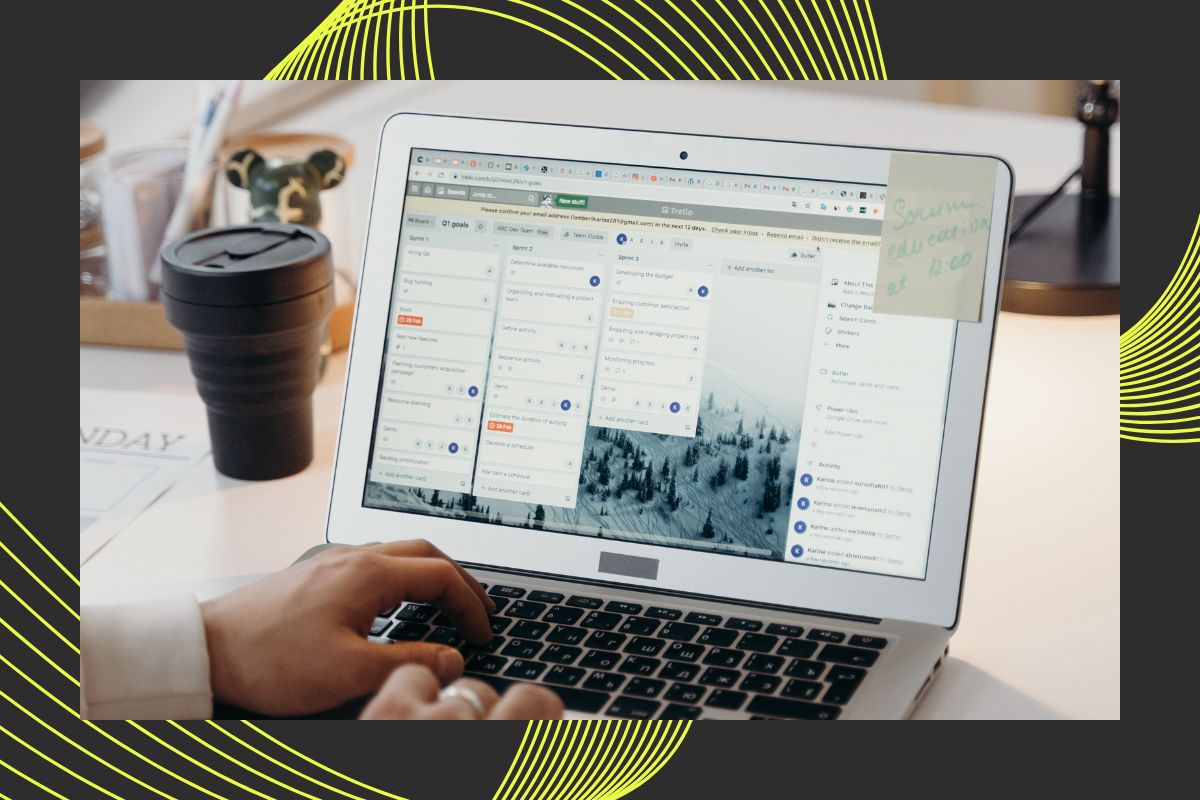TL;DR: The article is a thorough guide to selecting ABA data collection software, stressing that there’s no universally “right” choice—success hinges on understanding your specific needs, goals, and budget. It highlights essential software features like ease of use, customization, real-time analysis, and security. The piece also touches on the significance of data in ABA therapy, the transition from manual to digital methods, and key implementation strategies like team readiness and continuous support. Various software options are explored, highlighting their distinct features to assist therapists and educators in making well-informed decisions.
Navigating the landscape of Applied Behavior Analysis (ABA) data collection software can seem daunting. With the growth of ABA therapy and the increasing emphasis on data-driven decisions, the right software can significantly enhance therapy outcomes by providing accurate, real-time insights into patient progress.
However, with so many options available, each promising a comprehensive suite of features, how do you determine which software best meets your specific needs? This guide is designed to demystify selecting the best ABA data collection software for therapists, educators, and administrators alike.
From understanding the essentials of ABA data collection and the importance of user-friendly interfaces to evaluating software based on integration capabilities and compliance with data security standards, we’ll walk you through every step.
By focusing on key features such as customization options, mobile compatibility, and the support available for implementation and training, you’ll be equipped to make an informed decision that aligns with your therapeutic goals and operational requirements.
Understanding ABA Data Collection
Applied Behavior Analysis (ABA) is a therapy based on the science of learning and behavior, helping us understand how behavior works, how it is affected by the environment, and how learning takes place. ABA therapy applies our understanding of how behavior works to real situations.
The goal is to increase helpful behaviors and decrease harmful behaviors to influence learning outcomes positively. The effectiveness of ABA therapy heavily relies on collecting and analyzing data on an individual’s behavior and learning. Let’s delve into the nuances of ABA data collection, the types of data involved, its importance, and the challenges faced during this process.
Explanation of ABA Data Collection
ABA data collection is a systematic approach to observing, recording, and analyzing data on specific behaviors. It involves tracking the frequency, intensity, and duration of behaviors and the conditions under which these behaviors occur. This data provides the foundation for creating personalized therapy plans, setting goals, and measuring progress. It allows therapists and educators to make informed decisions based on empirical evidence rather than intuition.
Types of Data
In Applied Behavior Analysis (ABA), understanding and tracking various types of data is essential for effective assessment and intervention planning for individuals. Here are the key types of data that ABA professionals often collect:
- Frequency: This type of data collection focuses on counting how often a specific behavior occurs within a designated period. It is particularly useful for behaviors with a distinct start and finish, allowing for a precise tally.
- Duration: Duration data tracks the length of time a behavior persists from start to end. This measure is crucial for continuous behaviors, providing insights into their extent over time.
- Interval Recording: This technique involves checking for the presence or absence of a behavior within predetermined intervals. It’s beneficial for behaviors that are challenging to quantify through simple frequency or duration measures.
- Time Sampling: Unlike continuous observation, time sampling records whether a behavior occurs at specific, pre-selected moments. This method offers a practical approach to gathering behavior data without needing constant monitoring, making it efficient for capturing a behavior’s occurrence over time.
Importance of Accuracy and Reliability in Data Collection
The accuracy and reliability of data collection in ABA are paramount. Accurate data ensures that the therapy targets the right behaviors and that real progress is achieved. On the other hand, reliability means that different observers would collect similar data under the same conditions. High reliability and accuracy are crucial in developing effective therapy plans and evaluating their success. They ensure that decisions are made based on strong evidence, resulting in better outcomes for individuals undergoing ABA therapy.
Challenges in ABA Data Collection
Data collection in ABA has its challenges. One of the primary issues is the sheer volume of data that needs to be collected and analyzed. This can be overwhelming, especially in environments with multiple participants. Additionally, ensuring consistency and accuracy in data collection across different settings and observers can be difficult. These challenges highlight the importance of selecting appropriate data collection methods and training staff thoroughly.
Manual vs. Digital Recording
The traditional data collection method in ABA has been manual, using paper and pencil to record observations. While this method has the advantage of simplicity, it’s prone to errors and inconsistencies. It can also be time-consuming to analyze data collected manually.
Digital recording, on the other hand, uses software and mobile devices to collect data. This method offers several advantages over manual recording. It allows for real-time data entry and analysis, reduces the risk of human error, and makes it easier to share and store data securely. Digital systems can also prompt observers to collect data at specific times, ensuring that data collection is systematic and consistent.
Ensuring Data Integrity and Security
With the shift towards digital data collection, ensuring the integrity and security of data has become a critical concern. Data integrity involves maintaining the accuracy and consistency of data over its entire lifecycle. This is crucial in ABA therapy, where decisions are made based on the data collected.
Security is equally important, especially when dealing with sensitive information. Compliance with regulations like HIPAA (Health Insurance Portability and Accountability Act) in the United States is mandatory. Digital data collection systems must incorporate robust security measures, including encryption and secure data storage, to protect against unauthorized access and ensure the privacy and confidentiality of client information.
Key Features to Look For in ABA Data Collection Software
User-Friendly Interface
A user-friendly interface is crucial when selecting ABA data collection software, as it ensures that all team members, regardless of their technical proficiency, can efficiently navigate and utilize the software. This aspect is fundamental in reducing the learning curve and enhancing productivity. It allows therapists and educators to focus on their primary duties without getting bogged down by complicated software operations.
Customization Options
Customization options within ABA data collection software are pivotal in tailoring the software to meet the unique needs of each therapy session or educational program. The ability to create custom data sheets and input fields allows for a more personalized approach to data collection, ensuring that the software can adapt to various scenarios and requirements. This flexibility enhances the software’s usefulness across different cases and settings.
Real-Time Data Collection and Analysis
The real-time data collection and analysis capability is another essential feature of ABA data collection software. This functionality enables instant feedback on therapy effectiveness and learner progress, allowing for timely adjustments to therapy plans. This immediacy ensures that interventions are as impactful as possible, based on the latest data, thereby increasing the chances of achieving desired outcomes.
Integration Capabilities
Integration capabilities with other tools and software expand the functionality and efficiency of ABA data collection systems. By allowing data to flow seamlessly between systems, such as electronic health records (EHRs) or educational management systems, therapists and educators can ensure a holistic view of the individual’s progress and interventions. This interconnectedness is crucial for comprehensive care and educational planning.
Data Security and HIPAA Compliance
Data security and HIPAA compliance are non-negotiable features in any ABA data collection software, given the sensitivity of the information handled. Ensuring that data is securely stored and transmitted, with access strictly controlled and monitored, is essential for protecting the privacy of individuals and complying with legal standards. This trust is foundational to the ethical provision of therapy and educational services.
Mobile Compatibility
Mobile compatibility for on-the-go data entry addresses the dynamic nature of ABA therapy and education, where observations and interventions may occur in various settings outside of a traditional office or classroom. Software that supports mobile devices ensures that data can be captured accurately and efficiently, regardless of the location, making it invaluable for practitioners and educators who are often on the move.
Reporting and Graphing Tools
Reporting and graphing tools are integral components of ABA data collection software, providing a visual representation of progress and trends over time. These tools help simplify complex data sets into understandable formats, making it easier to communicate findings to parents, educators, and other stakeholders. The ability to quickly generate reports and graphs enables informed decision-making and supports continuous improvement in therapy and educational outcomes.
Researching & Comparing Software Options
When finding your ideal Applied Behavior Analysis (ABA) data collection software, it’s vital to approach the process with a strategy emphasizing thorough research and careful comparison. The landscape of ABA data collection software is diverse, with each option offering a unique blend of features, capabilities, and user experiences tailored to meet the varying demands of ABA therapy and education.
The goal is not just to find software that captures data but to discover a solution that aligns with your specific needs, enhances data management efficiency, and ultimately contributes to the effectiveness of therapy outcomes.
Researching and comparing software options is a multi-faceted endeavor. It involves delving into what each software can offer, from its user interface and customization capabilities to its integration potential with other tools and systems. Moreover, considering aspects such as data security, HIPAA compliance, mobile compatibility, and the availability of analytical tools is paramount. These elements are not just features but are foundational to ABA programs’ operation, compliance, and success.
As we explore the options available, our goal is to provide you with the insights needed to make an informed decision. This involves gaining an understanding of each vendor and their data collection software, focusing on the key features.
The ABA data collection software platforms mentioned in this article are subject to continuous evolution, with features potentially being added or phased out over time. To ensure you have the most current and accurate information, we recommend directly contacting the respective vendors.

1. RethinkBH
Overview
RethinkBH provides an all-inclusive practice management software tailor-made for ABA and pediatric therapy providers, ensuring a hassle-free workflow that lets you dedicate more time to your clients.
Packed with robust features, including clinical programming, mobile data collection, appointment scheduling with reminders, staff training, and insurance billing, you can trust that your practice operates seamlessly.
Comment about Rethink TotalTherapy
Rethink recently acquired TotalABA, now Rethink TotalTherapy, a practice management and data collection software. TotalTherapy is specifically designed for multidisciplinary practices serving children with diverse needs. Built on the Salesforce platform, Total Therapy caters to occupational therapists, physical therapists, speech-language pathologists, and more, seamlessly integrating their data and workflows with the ABA services offered by RethinkBH.
High-Level Features
- Mobile Data Collection: Record data on mobile devices, online or offline.
- Comprehensive Library: 1,500+ protocols and videos for staff/parents. VB-MAPP integration for assessment and curriculum alignment.
- On-Demand Analytics: Clinical dashboards provide instant insights, improving clinical outcomes.

2. CentralReach
Overview
CentralReach provides an ABA practice management software that integrates with your practice. From managing intake and scheduling to handling billing and payroll, HIPAA-compliant solution ensures your ABA and pediatric therapy practice runs smoothly.
You can streamline your operations with features like clinical programming, mobile data collection, appointment scheduling, reminders, staff training, and insurance billing.
Features
- Mobile Data Collection: Conduct quality data collection anytime, anywhere with the CR Mobile App
- Quicker Client Progress: Automatic syncing of ABA data sheets and client books for swift clinical and technician coordination.
- Support Caregivers: Simplified digital ABA data tracking and graphing for caregivers, enhancing home treatment and fulfilling insurance needs.
- Smart Auto-graphing: Instant, automatic generation of various ABA graphs like lines, pie, bar charts, scatterplots, and more.

3. Therapy Brands
Overview
Therapy Brands offers high-value practice management, EMR, and billing software designed to enhance the user experience and boost clinical retention for ABA Therapy Practices. Tailored for solo practitioners, group practices, or large enterprise operations, their solutions are integrated and user-friendly. They are quick to set up and focus on maximizing your time for patient care.
Know About Catalyst by Therapy Brands
Therapy Brands owns Catalyst, data collection software that streamlines data management with customizable templates for notes, signatures, and assessments. It effectively tracks skill acquisition and behavior reduction, links to tailored criteria, and easily generates automatic progress reports.
The system is adaptable to meet your specific needs, enhancing efficiency in data handling. If you want the complete project management suite, you can stack Catalyst and WebABA together to simplify managing your ABA practice.
Features
- Automated Mastery, Maintenance, & Baseline Criteria: Automate mastery procedures and define mastery criteria. Auto-opens treatment targets post-baseline failure, moves mastered targets to maintenance, and initiates the next treatment targets upon mastery. Provide real-time data access for users, parents, and administrators on mastered targets, performance trends, and various client statistics.
- Advanced Graphing Engine: Real-time graph adjustments with over 20 options, featuring immediate updates and analytical tools like trend lines, averages, and therapist-specific data splits.
- Automatic Progress Reports: One-click generation of various reports with customizable templates and options for personalized branding and layout.

4. Motivity
Overview
Motivity is a centralized system for managing various aspects of ABA therapy, including patient data, treatment plans, and progress tracking. The platform aims to streamline the therapy management process, making it more efficient and effective for practitioners.
By providing a unified solution for data collection, analysis, and reporting, Motivity helps ABA professionals optimize their therapeutic interventions and better support the developmental needs of their clients. Additionally, Motivity is often stacked with Aloha for the whole practice management suite.
Features
- Creative Program Design: Allows you to define multiple phases for a target, each with unique user interfaces, instruments, and custom transition logic.
- Mobile Data Collection: Collect and analyze data on any device anywhere.
- Robust Session Notes: Complete note history, quick parent signature, and a customizable approval workflow.
- Real-Time Data: Results appear on-screen instantly as trials are conducted by another therapist.

5. Raven Health
Overview
Raven Health’s data collection software is crafted to be seamless, user-friendly, and invisible, enabling technicians and BCBAs to focus more on client interaction and less on documentation.
This tool is designed to efficiently compile session data and give BCBAs the power to analyze program progress, streamline documentation for insurance, and manage their entire business with scheduling features, an insurance billing tool, and more.
Features
- Collection Tracking: Tracks client progress objectively through program and behavioral data, enabling accurate measurement of improvements and data-driven intervention decisions.
- Data-driven Decision Making Using Customizable Reporting: Features a user-friendly reporting dashboard for quantitative graphical data representation, simplifying trend analysis within client programs.
- Evolving Treatment Plans: Clinicians can make informed, evidence-based decisions regarding interventions, strategies, and treatments to modify or enhance client treatment plans effectively. Use data to evolve your client’s treatment plan.
Honorable Mentions
Hi Rasmus
Hi Rasmus is a user-friendly platform that leverages advanced technology to streamline the management and delivery of ABA therapy services. It’s designed to enhance the efficiency of therapists and administrators by providing intuitive tools for scheduling, data collection, and analysis.
ZigZag
ZigZag offers innovative solutions tailored for ABA therapy providers, focusing on simplifying data collection and analysis. Its platform is built to support therapists in tracking progress and making informed decisions to optimize therapy outcomes for individuals with developmental disabilities.
ABA Matrix
ABA Matrix is a software solution that aids ABA therapists in creating and managing personalized treatment plans. It emphasizes a systematic approach to behavior analysis, making it easier for professionals to monitor client progress and adjust strategies as needed.
Portia
Portia shines in ABA therapy by offering a seamless integration of therapy session management with data tracking capabilities. Its platform is designed to support therapists in delivering personalized, evidence-based interventions, enhancing the therapy experience for providers and clients.
ABA Desk
ABA Desk provides an educational and data management platform aimed at supporting ABA therapists and educators. It focuses on making data collection and analysis more accessible, facilitating more effective teaching strategies and interventions.
MeasurePM
MeasurePM stands out for its project management tools explicitly tailored for ABA therapy practices. It combines client management, billing, and data analysis features in one platform, aiming to streamline operations and improve the quality of care provided.
GoLOTUS
GoLOTUS is dedicated to simplifying the ABA therapy process with its user-friendly software, which offers session notes, data tracking, and scheduling features. It’s designed to reduce administrative burden and enable therapists to focus more on client interaction and outcomes.
Skills Global
Skills Global provides a comprehensive ABA therapy management system that includes assessment tools, curriculum planning, and progress tracking. Its platform empowers educators and therapists with the resources they need to deliver personalized and effective ABA therapy.
ABA Therapy Tracker
ABA Therapy Tracker is focused on providing a reliable and intuitive tracking system for ABA therapy sessions. Its platform enables therapists to easily record and analyze therapy data, helping to ensure that client progress is accurately monitored and optimized.
Artemis ABA
Artemis ABA is known for its comprehensive approach to ABA therapy management, offering tools for scheduling, data collection, analysis, and billing. Its platform is designed to support the specific needs of ABA therapists, streamlining administrative tasks to enhance therapy delivery.
Implementation and Training
Adopting new ABA data collection software requires meticulous planning, comprehensive training, and ongoing support. This process is not only about technological change but also about people and how they adapt to new tools in their workflow.
Let’s explore the critical steps involved in the implementation and training phase to ensure a smooth transition and widespread acceptance among users.
Preparing Your Team for New Software
Preparing your team for the introduction of new software begins with clear communication about the reasons behind the change and its benefits. Engaging with team members early in the decision-making process is crucial, allowing them to express concerns and contribute ideas.
This inclusive approach helps build a positive attitude toward the upcoming change and lays the groundwork for a collaborative implementation process.
Training Sessions and Materials
Effective training is the cornerstone of successful software implementation. Tailored training sessions should cover both the basic functionalities of the software and its advanced features. Providing comprehensive materials, such as user manuals, quick reference guides, and video tutorials, can cater to different learning styles and paces, ensuring that all team members become proficient in using the new system.
Addressing Resistance to Change
Resistance to change is a natural human response, and addressing it requires a thoughtful approach. Open discussions about concerns and challenges help in understanding the reasons behind resistance. Offering additional support and highlighting the positive impact of the new software on their daily work can alleviate fears and build confidence among team members.
Integration with Existing Systems
Seamless integration with existing systems is vital to maintain workflow continuity and data consistency. It’s important to work closely with the software provider to ensure the new system can communicate effectively with other tools, such as electronic health records or billing software. Proper integration minimizes disruptions and maximizes the efficiency of the new software.
Data Migration Challenges and Solutions
Migrating data from old systems to new software can be complex and fraught with data loss or corruption risks. Planning a data migration strategy that includes data cleaning, mapping, and validation phases is essential. Employing tools or services offered by the software provider can simplify this process, ensuring a secure and accurate transfer of information.
Monitoring and Feedback Loop
After the initial rollout, it’s essential to monitor the use of the new software and establish a feedback loop with users. This monitoring can identify issues early on and provide insights into additional training needs or system adjustments. Encouraging user feedback not only aids in fine-tuning the system but also fosters a sense of ownership and acceptance among the team.
Ensuring Smooth Adoption
Ensuring smooth adoption goes beyond technical training; it involves supporting users in the practical application of the software in their daily tasks. This might include setting up a help desk, providing access to online resources, or creating a community of practice where users can share tips and experiences. Such support mechanisms can significantly enhance user confidence and proficiency.
Adjusting Based on User Feedback
User feedback is invaluable for continuous improvement of the software implementation. It can reveal unforeseen issues or suggest enhancements that make the software more effective and user-friendly. Regularly reviewing and acting on user feedback demonstrates a commitment to meeting the users’ needs and can lead to more refined and effective use of the software over time.
FAQs
What is ABA data collection software?
ABA data collection software is a specialized tool designed to assist in the systematic observation, recording, and analysis of data related to individual behaviors in Applied Behavior Analysis therapy. These tools are crucial for tracking the frequency, duration, and types of behaviors to tailor therapy plans and measure progress.
Why is a user-friendly interface important in ABA data collection software?
A user-friendly interface is important because it ensures therapists, educators, and other users can navigate and utilize the software efficiently, regardless of their tech savviness. This reduces the learning curve and helps focus on the primary objective of behavior analysis and intervention planning.
How do customization options enhance ABA data collection software?
Customization options, such as creating custom data sheets and input fields, allow users to tailor the software to fit the unique needs of each therapy session or educational program. This flexibility ensures the software can adapt to various scenarios, making it more effective and user-friendly.
What makes real-time data collection and analysis beneficial in ABA therapy?
Real-time data collection and analysis provide immediate insights into therapy effectiveness and learner progress. This allows for timely adjustments to be made to therapy plans, ensuring interventions are as impactful as possible and facilitating quicker, more informed decision-making.
Why is software integration important in ABA data collection systems?
Integration with other tools and software, such as electronic health records or educational management systems, ensures a holistic view of the individual’s progress and interventions. This interconnectedness supports comprehensive care and educational planning, enhancing the overall effectiveness of ABA therapy.
What are the key data security and HIPAA compliance considerations in ABA software?
Ensuring data security and HIPAA compliance involves implementing robust measures to protect sensitive information, including encryption and secure data storage, to prevent unauthorized access and ensure the privacy and confidentiality of client information.
How does mobile compatibility improve the functionality of ABA data collection software?
Mobile compatibility allows for on-the-go data entry, making it invaluable for capturing accurate and efficient data regardless of the user’s location. This is especially beneficial for therapists and educators who work in various settings outside of a traditional office or classroom.
What role do reporting and graphing tools play in ABA data collection software?
Reporting and graphing tools simplify complex data sets into understandable formats, making communicating findings to parents, educators, and other stakeholders easier. These tools support informed decision-making and continuous improvement in therapy and educational outcomes.
How can resistance to change be addressed when implementing new ABA data collection software?
Addressing resistance involves open communication about the change, including discussing concerns and highlighting the benefits of the new software. Providing additional support and training can help alleviate fears and build confidence among users.
What strategies can ensure the smooth adoption and effective use of new ABA data collection software?
Strategies for smooth adoption include comprehensive training sessions, effective data migration plans, ongoing monitoring and support, and adjusting the software based on user feedback. Ensuring users are well-prepared, supported, and heard throughout the process can lead to successful implementation and maximized benefits of the new software.






